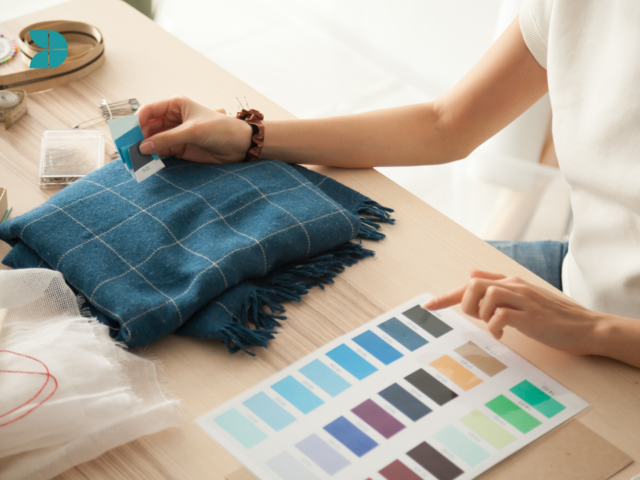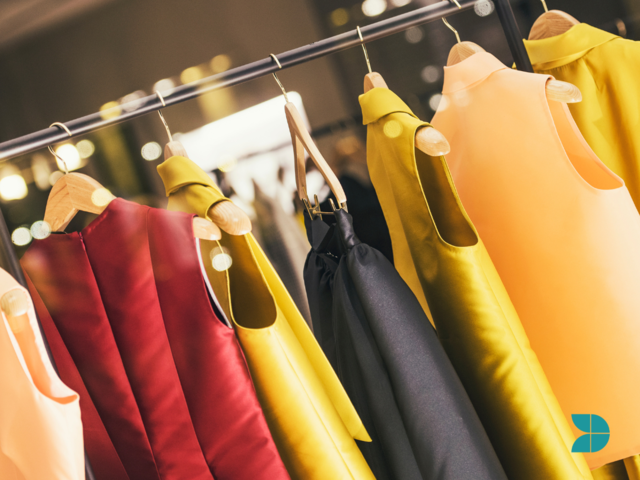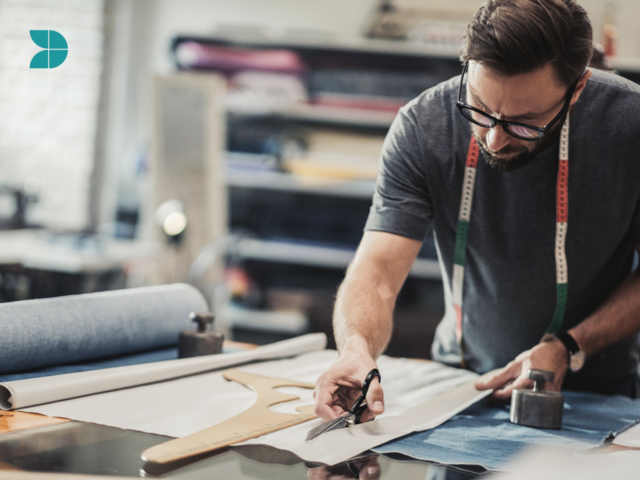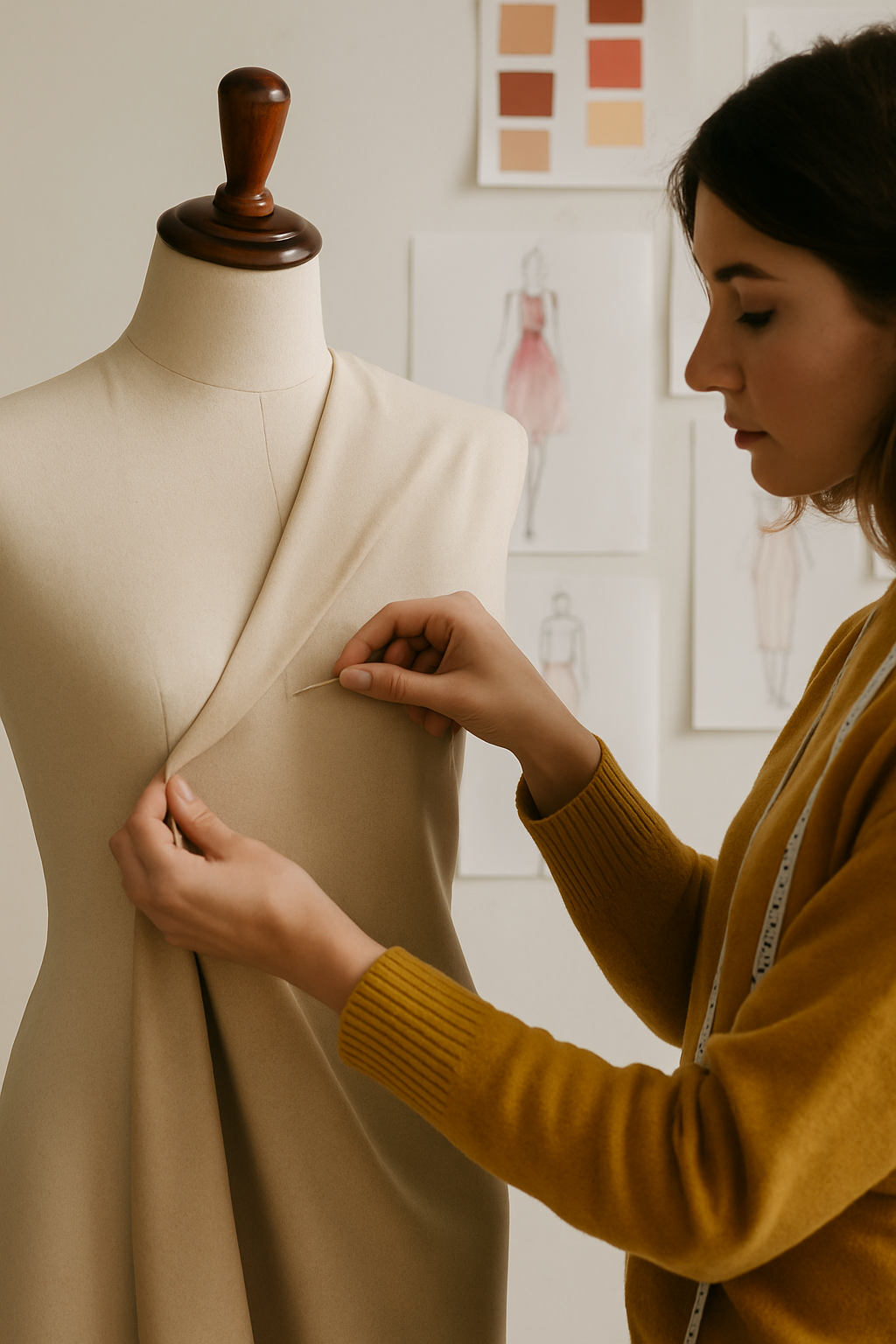There is no fashion without textiles! This may be a bold statement, but textile is cloth and cloth is clothing. Textile design is the creation of fabric and includes not only weaves, threads and materials but also elaborate patterns and textures. These are the injection of personality and originality that can make fashion design really sing. In this blog, we will investigate the significance of textile design in fashion. We will examine numerous sorts of textile patterns and offer tips on how to incorporate them into your fashion ideas. If you like what you read, don't forget to check out our fashion design courses at the end of this article!

The role of textile design in fashion
Textile design is the foundation of all fashion design. It is through textile design that designers can create fabrics and patterns that can bring even the most outrageous designs to life. It is the creation and manipulation of fabrics using diverse techniques such as printing, weaving, knitting, and embroidery. Textile design determines not only the aesthetic appeal of garments but also the drape, structure, and texture. There are no bounds to how creative a designer can go with textile design and it can be the very part of a fashion design collection that allows a designer to truly stand out.
Exploring Types of Textile Designs
Prints
Prints are designs or patterns that are applied to fabric surfaces using methods such as screen printing, digital printing, block printing, or hand painting. They can range from bold geometric motifs to delicate floral patterns, abstract designs, and even narrative drawings. Prints are a great way to establish a design style or create specific moods. They can also be used to express certain cultural or social perspectives or can simply be used for a touch of whimsy.
Embroidery
Embroidery is a craft that dates back centuries and across continents. While its origins are believed to have been born out of the necessity to mend and patch garments, it is most well known for the beautiful tapestries and intricate images and motifs. It is where fabrics are adorned with threads, beads, sequins or any other materials through needlework. Today embroidery can be as intricate or as abstract as you wish and can be created by hand or by machine. It adds texture and depth to a garment resulting in aesthetically striking features and one-of-a-kind focus points. As with many ancient crafts, embroidery can add a sense of unique care and attention to a piece of clothing that can lend a timeless elegance to any garment.
Weaving
Weaving is the process of interlacing threads to make fabrics. To have skills in weaving means that as a designer, you can create your own unique fabrics. It allows designers to experiment with different yarns, textures, and patterns that can yield new and innovative fabrics and styles. Weaving, everything from traditional handwoven fabrics to sophisticated jacquard weaves, allows you to experiment with colour combinations, textures, and structural designs.
Knitting
Knitting is the process of making fabrics by interlooping threads with knitting needles or machines. Its versatility ranges from fine and delicate knits to thick and textured materials. Knitwear remains a mainstay in Autumn / Winter fashion collections worldwide and has been through many iterations of style and approach since its inception. Knitted materials may give clothing warmth, flexibility, and fascinating surface effects. Designers can experiment with different knitting techniques such as cable knits, jacquard knits, and even atypical 3D knits to create unique and eye-catching designs.

Incorporating Textile Design in Fashion Creations
Creating mood boards
Begin by deciding on the look and feel of your collection, and then begin gathering ideas for your mood board. Assemble images, colours, textures, and patterns that are representative of your design vision and put them together on a board. Mood boards will help you to see your ideas as they evolve and how your colours and textures will behave when next to each other. It will also create an overall feeling for your design.
Exploring fabric selection
Allow your mind to explore the idea of a fabric that you may not have previously considered. Think about the features and properties of various textiles, as well as how they fit with your design concept. By playing with the textures and different looks of fabrics, you may find your design is taken in a new and pleasantly surprising direction.
Sketching and design development
When putting your design ideas on paper, think about how a textile will enhance the garments in their texture or indeed movement. Perhaps your designs would benefit from prints, embroidery or weaves. Or maybe a knit or different weight of fabric will complement the silhouette, enhance the mood, or tell a new story.
Collaboration with textile designers
Working closely with textile designers can be the key to bringing your design ideas to life. A strong working collaboration can result in the creation of custom prints, embroidery patterns, or unusual fabric weaves that complement your design concept. A textile designer will have a deeper knowledge of fabrics and can provide a fresh insight into the possibilities and choices that would work best with your design.
Balancing textile designs
When using a combination of textile designs, it is important to test the fabrics next to each other to ensure a balance can be achieved. Consider how the design features interact with the body, the silhouette, the seams, and the overall garment construction. While a contrast of textiles can be a beautifully striking style choice, the overall look must still maintain a sense of cohesion. The fabrics must complement the overall design.
Textile design's future in fashion
Driven by technology advancements, textile design continues to adapt and embrace innovation while moving more and more towards environmental concerns. Customer preferences are also shifting and leaning more towards digital printing and eco-friendly fabrics. The future of fashion textile design is defined by experimentation, sustainability, and an emphasis on individuality. As a fashion designer, it’s vital to remain up to speed with developing textile design trends and techniques as these will enable you to create impactful and forward-thinking fashion collections.

Textile design is an essential component of fashion design and the foundation for all fabrics and cloth. With infinite choices in creativity and self-expression, there are no limits to where textile design can take a designer. Whether through printing, embroidery, weaving, or knitting, textiles offer additional depth, texture, and personality to clothing, distinguishing them in the fashion industry. If you're interested in fashion design, our courses will provide you with extensive instruction in textile design and other necessary skills, preparing you for a successful career in the fashion industry.
Are you ready to let your imagination run wild with textile design in fashion? Explore our fashion design classes and see where the next adventure will take you!

